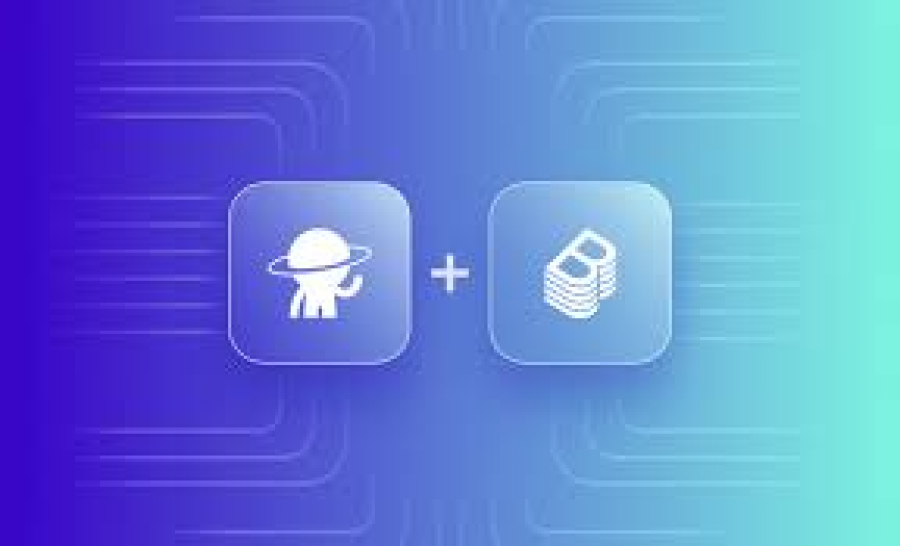Web 3.0: What Freelancers Should Prepare For
The digital world is shifting from centralized platforms to a decentralized future. This new phase — known as Web 3.0 — is set to disrupt the internet as we know it. Driven by blockchain, decentralization, AI, and semantic web technologies, Web 3.0 presents exciting opportunities for freelancers across industries. But with those opportunities come major changes in tools, platforms, client expectations, and business models. At freelancerbridge, we aim to help freelancers stay ahead of technological change. In this guide, we’ll explore what Web 3.0 means, how it will transform freelancing, and what skills, tools, and strategies you need to thrive in the next era of the web.
Long Description:
1. What is Web 3.0? A Quick Overview
Web 3.0 represents the third generation of internet technologies, evolving from:
Web 1.0 (Read-Only): Static web pages and limited interaction
Web 2.0 (Read-Write): Interactive platforms like social media, cloud apps, and user-generated content
Web 3.0 (Read-Write-Own): Decentralized, AI-driven, and tokenized ecosystems where users own their data, interact through peer-to-peer systems, and participate in the internet economy directly.
Key characteristics of Web 3.0:
Decentralization (no central servers or authorities)
Blockchain-based infrastructure
Token economies (cryptocurrencies, NFTs)
Smart contracts (self-executing agreements)
AI and semantic data processing
Self-sovereign identity and privacy
For freelancers, this evolution is both a challenge and an opportunity.
2. How Web 3.0 is Changing the Freelance Economy
Web 3.0 is not just a tech upgrade — it’s a complete transformation of how we build, collaborate, and monetize online. For freelancers, here’s how things are changing:
a) Decentralized Work Platforms
Web 3.0 eliminates intermediaries. Platforms like Braintrust, Ethlance, and Opolis allow freelancers to work directly with clients through blockchain-powered contracts and payments.
Benefit: Lower fees, faster payments, and more control.
b) Smart Contract-Based Payments
With smart contracts, freelancers can get paid automatically once milestones are met — reducing disputes and ensuring transparent terms.
Use Case: Web developers, marketers, and designers can set up milestone-based payments that release funds upon task verification.
c) Tokenized Earnings
Some Web3 clients pay in cryptocurrencies or native tokens. These can appreciate in value or be used in platform ecosystems.
Example: Getting paid in $BTRST (Braintrust token) or $MATIC (Polygon) instead of fiat currency.
d) New Niches and Services
Web 3.0 introduces entirely new industries like:
NFT creation and marketplaces
Decentralized finance (DeFi) marketing and audits
DAO (Decentralized Autonomous Organization) development
Token-based community management
Web3 UX/UI design
These open up specialized freelance opportunities for early adopters.
3. In-Demand Skills for Web 3.0 Freelancers
To stay competitive, freelancers need to adapt to the skills required in the decentralized web. Here are the key areas to focus on:
a) Blockchain Literacy
Understand how blockchain works — including wallets, consensus mechanisms, and smart contracts.
Tools to Learn:
Ethereum basics
MetaMask and WalletConnect
Blockchain explorers like Etherscan
b) Smart Contract Development
Freelancers in development should learn Solidity, Rust, or Vyper to create smart contracts for Ethereum, Solana, and other platforms.
Frameworks: Truffle, Hardhat, Remix IDE
c) Decentralized App (dApp) Development
Learn to build apps that interact directly with blockchains and user wallets.
Languages and Tools:
Web3.js or Ethers.js
IPFS for decentralized storage
The Graph for indexing blockchain data
d) Web3 UX and UI Design
Web3 needs intuitive user experiences. Designers who understand wallet flows, token permissions, and decentralized onboarding will be in high demand.
e) Content Creation and Web3 Marketing
Writers and marketers must understand tokenomics, DeFi, and NFTs to effectively create content and grow communities.
New roles include:
Web3 content strategist
Crypto PR specialist
NFT copywriter
DAO community manager
4. Web 3.0 Tools Every Freelancer Should Know
a) MetaMask
A crypto wallet used for authentication and transactions in dApps.
b) OpenZeppelin
Framework for building secure smart contracts.
c) Moralis
Web3 backend platform to build dApps quickly without managing servers.
d) Mirror.xyz
A decentralized blogging platform with token-based publishing.
e) IPFS & Arweave
Decentralized file storage tools for hosting portfolios or client work securely.
f) DAOHaus, Snapshot
Platforms to build and interact with decentralized autonomous organizations (DAOs).
5. Preparing Your Freelance Business for Web 3.0
To make the most of this shift, take these practical steps:
a) Set Up Your Web3 Identity
Create your crypto wallet and professional profiles on platforms like:
ENS (Ethereum Name Service)
Gitcoin
Mirror.xyz
LinkedIn with Web3 certification
b) Start Accepting Crypto Payments
Use platforms like OpenNode, BitPay, or Coinbase Commerce to receive cryptocurrency securely.
c) Join Web3 Communities
Become active in developer DAOs, Discord channels, and forums related to your field. This is where clients post jobs, collaborations happen, and news spreads.
d) Develop a Web3 Portfolio
Showcase projects involving blockchain, NFTs, smart contracts, or decentralized tools. Consider building your personal site on IPFS or integrating wallet login.
e) Learn Continuously
The Web 3.0 landscape is still young and changing rapidly. Stay current by following:
Web3 University
Buildspace
ETHGlobal
Bankless Podcast
DeveloperDAO
6. Risks and Challenges for Freelancers in Web 3.0
While Web 3.0 offers exciting opportunities, freelancers must be cautious of:
a) Volatility in Crypto Payments
Token values can fluctuate significantly. Convert earnings to stablecoins or fiat if needed.
b) Legal and Tax Ambiguity
Crypto earnings may be taxable. Consult local financial advisors for reporting requirements.
c) Security Risks
Scams and phishing are common in Web3. Always double-check smart contracts, wallets, and client authenticity.
d) Tool Complexity
Web3 tools are still maturing. Some may have bugs, steep learning curves, or lack user-friendly interfaces.
Despite these challenges, staying informed and working with verified platforms helps reduce risk.
7. Web 3.0 and the Future of Remote Freelancing
Web 3.0 isn't just transforming how websites are built — it’s reimagining the entire freelance infrastructure. We will see:
Reputation on-chain (blockchain-based ratings and history)
Automated contracts and milestone verification
Token-incentivized contributions to open-source projects
Decentralized social networks for client discovery
Global teams working across DAOs and dApps
Freelancers who embrace these shifts early will be better positioned for long-term success.
8. Case Studies: Freelancers Already Thriving in Web 3.0
Example 1: Web3 Front-End Developer
Built an NFT marketplace interface using React and Web3.js, earning crypto payments and long-term contract extensions.
Example 2: Crypto Copywriter
Writes whitepapers and product descriptions for DeFi platforms, paid in USDC with token bonuses.
Example 3: DAO Contributor
Participates in governance, writes proposals, and earns through on-chain voting rewards and grants.
Conclusion:
Web 3.0 is not a futuristic fantasy — it’s already here. For freelancers, it represents one of the biggest shifts in the digital economy in over a decade. Whether you’re a developer, writer, designer, marketer, or virtual assistant, preparing for Web 3.0 now will help you stay relevant, competitive, and in demand.
At freelancerbridge, we encourage freelancers to adopt forward-thinking skills, explore blockchain technologies, and align with the decentralized internet. The next generation of clients, projects, and payments will happen on-chain — and the most successful freelancers will be those who saw it coming and acted early.


 by Emily
by Emily




